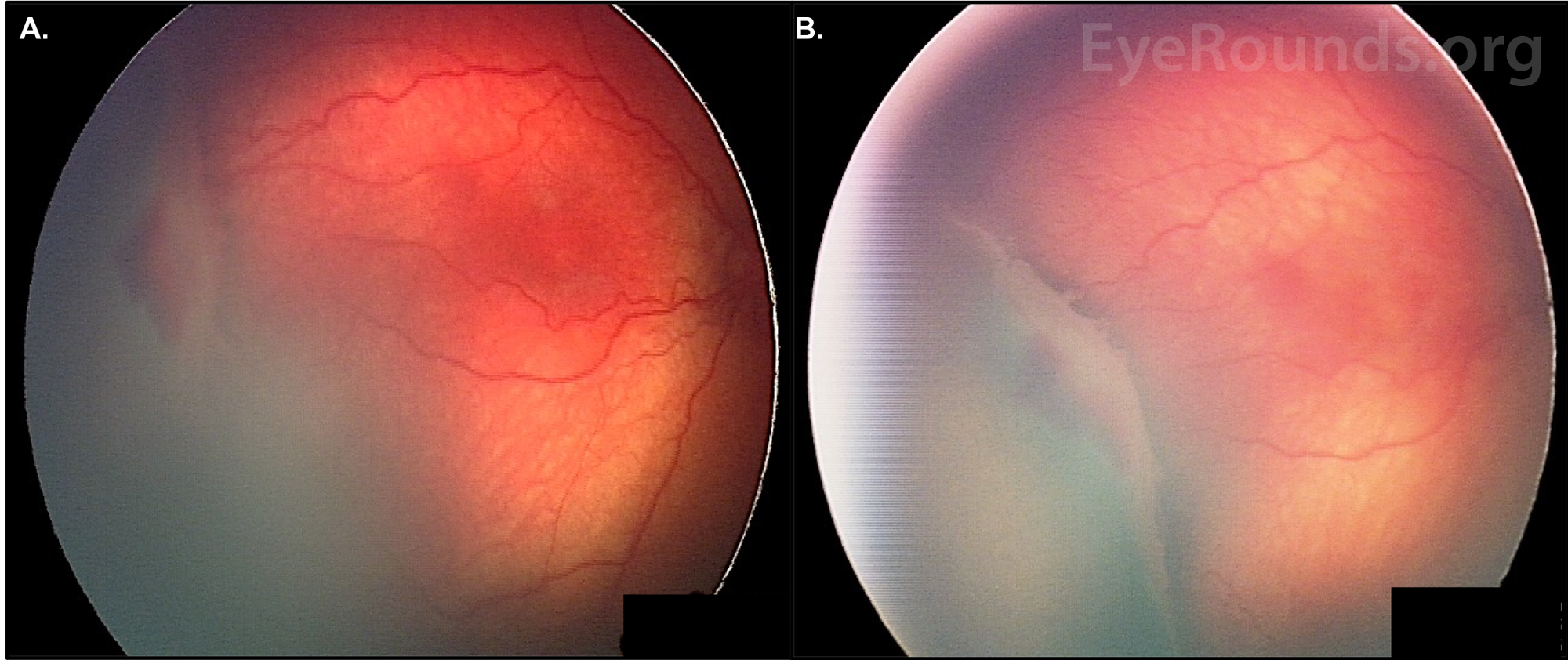 |
The proportion of premature infants diagnosed with ROP increased from 4.4% in 2003 to 8.1% in 2019 in the US. Infants who were Black or Hispanic, born in lower-income households or were from the South or Midwest and may be more significantly affected. Photo: University of Iowa/www.eyerounds.org. Click image to enlarge. |
Research demonstrated a significant increase in the incidence of retinopathy of prematurity (ROP) among premature infants from 2003 to 2019, especially in Black and Hispanic infants, according to findings from a recent retrospective cohort study.
Study authors used the Healthcare Cost and Utilization Project Kids’ Inpatient Databases, which are produced every three years and include data from over 4,000 hospitals. These databases generate national estimates of healthcare trends in the US.
Study participants included pediatric newborns at risk for ROP development between 2003 and 2019. The research team analyzed incidence in selected subpopulations based on database-reported race and ethnicity, sex, location and income.
This analysis included 125,212 ROP discharges from 23,187,683 births. Data showed that the proportion of premature infants diagnosed with ROP increased from 4.4% in 2003 to 8.1% in 2019. The study authors observed the greatest proportional increase of ROP diagnoses (4.9% to 9.0%) in premature infants from low-income households.
Compared with other groups, premature Black infants experienced the largest increase from 5.8% to 11.6%, according to research findings. Hispanic infants experienced the second largest increase from 4.6% to 8.2%.
Additionally, the researchers reported that the Southern US had the greatest proportional growth of diagnoses (3.7% to 8.3%) vs. other groups. When looking at urban and rural areas, the data demonstrated that ROP diagnoses proportionally increased and decreased, respectively.
“In this cohort study, we found that the overall incidence of ROP among premature infants nearly doubled from 2003 to 2019,” the study authors concluded in their paper for JAMA Ophthalmology, while emphasizing the impact this condition has on the US healthcare system.
“This study also identified concerning racial, socioeconomic and geographical disparities in infants who were Black or Hispanic, had lower income or were from the South or Midwest and may be more significantly affected by the increase in ROP incidence,” they wrote. “Although causation cannot be determined from this database study, these trends emphasize that ROP is a growing problem in the US and may be disproportionately affecting certain subpopulations.”
These findings are consistent with an estimate from the Academy of Ophthalmology’s IRIS Registry reported a week earlier in the Ophthalmology journal. The authors of that work speculated that this increase may be the unfortunate downside of increased survival rates of low birth-weight infants, who are at greater risk of developing severe ROP.
Bhatnagar A, Skrehot HC, Bhatt A, et al. Epidemiology of Retinopathy of Prematurity in the US From 2003 to 2019. JAMA Ophthalmol. April 13, 2023 [Epub ahead of print]. |

